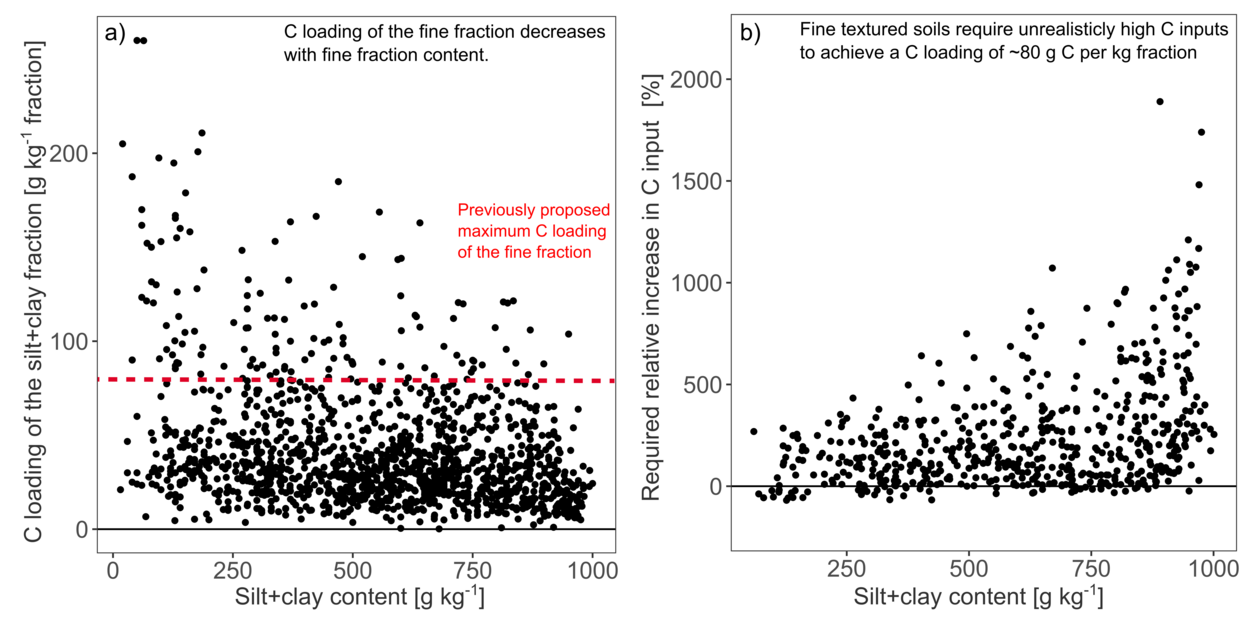The paper uses a large data set from literature and our own work, as well as the carbon model RothC, in order to question how much carbon (C) can actually be stabilized in soils. More specifically, we investigated whether the upper limit frequently used in the the upper limit frequently used in the literature is really a mineralogical potential of the soil, or whether there are perhaps other factors that could inhibit the further increase in C. Our estimates show that the observed upper limit is very strongly dependent on the by the photosynthetic capacity of ecosystems, i.e. the C input. 74 % of the temperate and subtropical soils studied would even with complete and very long-term incorporation of the entire net primary production not have enough input to reach what is currently regarded as the mineralogical upper limit. Particularly fine-grained soils, have a huge reservoir for stabilizing carbon, which is usually only filled to a small extent. We therefore also derive new upper limits of the potentially achievable C stabilization according to texture classes and conclude at the same time that the famous "C saturation" of a soil under natural conditions (at least in the climatic zones studied) cannot be observed at all and is of little relevance for our agricultural soils.
Scroll to top

![[Translate to English:] [Translate to English:]](/media/_processed_/6/4/csm_titel_CO2Kampagne8_afeea2273e.png)
![[Translate to English:] [Translate to English:]](/media/_processed_/4/1/csm_titel_93px_CO2Kampagne8_9b0f3354d4.png)






